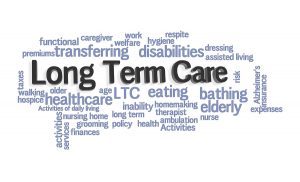Guest Blog: Elderly Temper Tantrums: What’s Behind the Outburst?
It can be somewhat scary when your parent has a tantrum for the first time as an adult. Although we often associate tantrums with young children or teenagers, emotional outbursts can happen at any stage of life. Acting out is losing control when confronted with intense emotions like anger, grief, fear, or any combination of the three.
Watching an elderly parent lose their cool is problematic because it seems wrong on many levels. Many family caregivers are horrified and unsure of how to react when their parent exhibits a level of irrationality that they have never seen before. The best way to handle an outburst without losing your cool also depends on understanding the causes of it. For treatments, you can also find a therapist from counselling Chigwell.
Why Elderly Family Members Act Out
There are numerous reasons why seniors have tantrums. It frequently happens due to the personality changes brought on by dementia, including Alzheimer’s disease. Certain pharmaceutical drugs may interact or have adverse side effects that lead to irritation and mood changes. A person’s health-related worry or depression may lead to emotional outbursts. The senior in question is misbehaving, but the most complicated explanation to swallow is that they are simply being stubborn and trying to get their way.
It isn’t much you can do if you are dealing with the emotional ups and downs of an elderly loved one with dementia. Outbursts characterise many types of dementia and stages in the condition’s course. Even though it would be tempting to try to reason with a person with cognitive impairment, the truth is that doing so will only worsen the situation. You can talk to the doctor about your loved one’s options for treating anxiety and recent dementia symptoms like violent emotional outbursts. Otherwise, the best you can do to prevent dementia-related outburflares maintain a peaceful, familiar, structured, engaging, and optimistic environment around them. Any abrupt changes in a senior’s conduct should be taken seriously. It can indicate an adverse drug reaction or an underlying health problem, including a urinary tract infection (UTI), untreated discomfort, or restless sleep. Seniors may experience peculiar behavioural signs from diseases like UTIs that are uncommon in younger people. It’s crucial to get a loved one checked out by a doctor immediately if they start acting irrationally angry or disturbed.
Five Ways for Handling Elderly Temper Tantrums
- Make an appointment with your loved one’s doctor to ensure that any new or escalating physical or mental health issues are not to blame for their bad behaviour.
- Do not interact with your elderly relative when they are acting off. Give it no energy at all. Let them know that you won’t be listening to their outburst. Say this as gently as you can, then turn around and go. Before you interact with them again, step out of the room and give them plenty of time to calm down.
- Once they have calmed down, softly grasp their hand and say, “I do love you,” if your loved one tells you to don’t. Since I love you so much, I must take breaks to give you the most excellent care possible. Keep it at that and avoid engaging in further conversation. You don’t need to provide an explained break from caring for a loved one or set limits on their unreasonable expectations. “No is a whole phrase” is a standard piece of advice given on the Caregiver Forum to members who have trouble establishing and upholding boundaries with challenging elders.
- Remind yourself that you deserve and need a break, then go ahead and take one. Doing something modest for yourself daily will set the bar, even if it isn’t an all-day affair. Schedule a respite period the same way you would any other appointment.
Your loved one will eventually start to respect your boundaries and self-care. They will understand that you are serious if you are constantly unyielding about your “me time” and limitations, and they will probably stop trying to manipulate your emotions. After some time, if they still don’t, you might have to stand your ground and impose even more stringent restrictions on what you will do for them and when. Being around constant negativity and criticism is harmful.
- Finally, be aware that you will feel guilty the first few times you carry out these measures. (This is precisely proper if you haven’t had much enjoy setting up barriers or advocating for yourself.) even though you have not carried out whatever is incorrect or malicious, you’ll sense as though you have got. Always prioritising the needs of others before your own is not a pleasant or healthy way to live. The secret to practical, long-term caregiving is learning to put self-care first and letting go of unjustified guilt.
Wrapping up:
It can be somewhat scary when your parent has a tantrum for the first time as an adult. Although we often associate tantrums with young children or teenagers, emotional outbursts can happen at any stage of life. Acting out is just losing control when confronted with intense emotions like anger, grief, fear or any combination of the three. I hope this article will help you with the information we discussed.
Guest Blog: 5 Ways Families Can Pay For Long-Term Care
Depending on what long-term care option your loved one chooses, prices can vary. Many families may be surprised to find out that Medicare and private health insurance policies don’t typically cover the cost of care. Learn how you can pay for long-term care by reading on!
1. Long-Term Care Insurance
In addition to your health insurance, families can purchase an additional long-term care insurance policy for their loved one. Policies generally cover most services offered by a home care agency, nursing home, or assisted living facility. It’s best to purchase a long-term care insurance policy when your loved one is in good health as they may not qualify if there are any pre-existing conditions.
2. Life Insurance
If your loved one already has life insurance, they may be able to add a long-term care rider to their policy. An accelerated death benefit allows your loved one to get a tax-free advance on their policy while they are still alive to pay for the cost of care. If your loved one doesn’t require long-term care, their beneficiaries receive a tax-free benefit as long as the policy is in effect.
3. Reverse Mortgage
A reverse mortgage allows the homeowner to draw on their home’s equity to pay for long-term care. Your loved one can receive a lump sum or monthly payment and even open up a new line of credit. In the event of their death, heirs are left with the remainder of the home equity after paying off the amount owed. There are both pros and cons of having a reverse mortgage.
4. Annuities
An immediate annuity and deferred long-term annuity can usually be purchased through your loved one’s insurance company. A single premium payment for an immediate annuity means they receive a specified amount of monthly income for a designated period of time. With a deferred long term annuity, they will have two sources of funding—one fund that is specifically for long-term care and another fund to use however they would like.
5. Out-of-Pocket
For seniors who don’t have an insurance policy or qualify for Medicaid, they must pay out-of-pocket. Planning for long-term care way before it’s needed can prevent stress and financial burden. This can benefit those who don’t want to pay high insurance premiums. However, only 1 in 4 adults over the age of 45 are actually prepared for the cost of care.
About the Author: Peter Kang is a writer for eCaregivers. He is inspired by his caregiver experience with his late grandfather and role model, a Korean War veteran, to help families find affordable care for their loved ones. Follow Peter on Facebook and Twitter.
The Importance of Social Interaction for Seniors
Social engagement offers senior individuals the chance to live longer. It provides several essential health benefits, such as a potential decreased risk of dementia and a wide range of physical issues, such as high blood pressure, arthritis, and cardiovascular activity.
Aside from the many readily apparent factors that significantly impact general health, like lifestyle choices, past injuries, and lack of access to healthcare, isolation is one such factor. As people age, their mobility declines, and their peers and older relatives pass away, the risk of loneliness increases. It is obvious how this will undoubtedly affect the elder’s emotions, but it may be less obvious how this will affect the elder’s physical health. The senior’s general health can be enhanced, and the cost of care may be decreased by addressing isolation and assisting the older adult in discovering additional avenues for social connection. Companion Care for Seniors delivers seniors with the essential social link. Without interaction with others, elders may begin to feel lonely and unhappy, which may lead to the emergence of mental health problems and a deterioration of their physical health. Senior in-home companions ensure that your loved ones engage in healthy activities and social contacts.
Numerous health advantages, including a lower incidence of depression and a longer life expectancy, have been linked to entire social life. Even higher benefits might result from social interaction with a variety of people. Older persons were more likely to engage in more physical activity, have more good moods, and experience fewer negative emotions if they connected with people outside their typical social circle of family and close friends.
It’s essential to Interact with Others.
The importance of social connection for your health and well-being is more significant than you would realise. It can aid in enhancing your immune system and extending life expectancy and fostering social relationships with those nearby.
For older persons, socialization is essential since it has many positive effects on their mental and physical health. Most people socialise with their immediate family or close acquaintances. Sadly, many older adults are lonely or have lost their friends and family, and this isolation can harm them.
You can benefit from social connection when kind people, including those surrounding you.
The feeling of belonging
People want to feel as though their lives matter and have a purpose. For older people, belonging is essential. Health issues could arise if this sensation is missing. Seniors who sense their lives are meaningless are likelier to suffer from impaired mental and physical fitness. Lower cognitive performance can result from a lack of meaning; however, socialising can lessen these dangers. Older persons have a sense of belonging when they are part of a social community. These relationships foster a sense of network and lower the chance of cognitive decline.
Maintain active
While staying physically active is essential as you age, older folks may lack the motivation to do so. The desire to exercise might be boosted by social interaction.
Seniors are more likely to exercise when socializing with people outside their immediate family. In addition to its many health advantages, exercise can help you age well by enhancing your capacity for learning, reasoning, and judgement. In addition to improving sleep, training can assist older persons in lowering their risk of anxiety and sadness.
less anxiety
Seniors who don’t engage in regular social engagement are more prone to stress and poor mental health. There are some behaviors that stress might upset you, with:
- Depression
- Anxiety
- vascular problems
- issues with the digestive system.
A robust support network can aid in preventing and reducing stress. Socialization reduces anxiety, boosting your confidence in your capacity to handle stress. Older folks who are socialised and in healthy relationships have a purpose and significance in their lives.
Improved Sense of satisfaction
Spending time with friends and family improves happiness and quality of life and opens one up to new ideas and viewpoints. Spending time developing connections makes older persons happier and reduces their risk of developing sadness and anxiety.
Friendships and relationships are crucial; studies show that socially active seniors have higher life satisfaction.
Lower Chance of Mental Decline
Alzheimer’s disease, which causes significant cognitive deterioration in millions of Americans, is prevalent. Socialization can reduce your chances of mental decline despite no cure.
Your cognitive performance can be positively affected by solid friendships. When older people interact with one another and keep their companies, their episodic memory, or capacity to recall specific memories in-depth, is preserved. In a study, socially engaged elders and significantly younger participants showed comparable episodic memories.
Enhanced Cognitive Performance
Did you know that social interaction can help your brain develop? Making new friends can increase memory recall and shield the brain from disorders that cause brain deterioration.
Older people benefit from social interaction. These interactions inspire seniors to keep learning and active minds to stave off mental decline.
Wrapping up:
This article will explain how crucial social attraction is for elders because, Without interaction with others, elders may begin to feel lonely and unhappy. The senior’s general health can be enhanced, and the cost of care may be decreased by addressing isolation.
Guest Blog: 6 Effective Ways to Reverse Tooth Decay Naturally
There is no argument about one thing – brushing is important when you have dental braces. Without proper oral care, you may face issues like tooth decay or cavities. If you do notice a cavity, there is a way to naturally reverse the decay and heal the teeth. Let’s see how you can do that.
6 Ways to Naturally Reverse and Heal Decayed Teeth
- Make Changes in Diet
You can reverse tooth decay by making a few changes in your diet. Some adjustments include:
- Limit the consumption of sugary foods and drinks as the sugars can cause plaque and cavities.
- Consume more calcium-rich foods such as broccoli and dairy to strengthen the teeth.
- Add Vitamins and Supplements in the Diet
Certain vitamins help in producing saliva. This, in turn, prevents the bacteria from staying on the teeth. Some vitamins also help in making the teeth stronger. Adding nutritious food to the diet can heal your teeth naturally.
Foods that promote salivation include peas, bananas, and brussels sprouts. Take supplements of Vitamin B, D, iron, and magnesium if you cannot get them from your diet. Eating whole-grain foods and seafood can give the required dose of nutrients and improve oral health.
- Practice Oral Hygiene
Good oral hygiene practices help in protecting the teeth from early decay. Also make sure to follow to follow a strict oral hygiene routine when you have braces.
- Brush twice a day to remove food particles stuck in the teeth and to keep them clean.
- Floss at least once a day to remove plaque and food that gets stuck under the gums and brackets
- Use a mouthwash to get rid of bacteria in the mouth
- Maintain Necessary pH Levels in the Mouth
Our teeth stay healthy in an alkaline environment. As soon as the pH levels start to dip below the neutral 7, our teeth will start to break down and demineralize.
When there is pH imbalance, it can create an environment for bacteria to grow and thrive. Avoid foods that can cause pH imbalance such as coffee, citrus fruits or sugars.
Use a remineralizing toothpaste as it can increase the pH level of the mouth and strengthen the tooth enamel.
- Consume Natural Probiotics
Bad bacteria that cause infection search for smaller areas in the teeth to hide. They would decrease the pH value of the mouth as well. Probiotics help in offsetting the acidic pH in the mouth. Consume foods that arerich in probiotics such as curd, kombucha or sauerkraut.
These foods stimulate the production of healthy bacteria in the mouth. This further helps in preventing plaque buildup or decaying of teeth.
- Oil Pulling
This is a simple yet very effective detoxification process for teeth care that includes swishing oil in your mouth for a few minutes. This technique can prevent plaque buildup and gum diseases like gingivitis. Do not swallow the oil and rinse with warm saltwater after swishing. Follow this by brushing your teeth.
Though these natural methods can be very effective, remember that everyone responds differently to these methods. You must also visit your orthodontist regularlyto make sure there are no dental problems.
Author Bio:
Dr. Satish Pai is an orthodontist and an Ivy League trained dentist who has and has served as a faculty at Columbia University. He believes that a perfect smile not only makes a person look great but feel great. As the founder of Putnam Orthodontics and a Partner at Rome Orthodontics, he is dedicated to providing the best orthodontic treatments to his patients. He also writes to educate people about everything orthodontics and the importance of correctly aligned teeth along with good oral health. In his free time, you can find him golfing, doing yoga or surfing, and spending time with his family.
Seniors and Pet Ownership
Whether you enjoy the company of dogs, cats, or even iguanas, pets have been proven to benefit seniors in plenty of ways. For many, they have become an integral part of the family. In fact, assisted-living facilities have adopted a few animals from shelters to keep residents company and uplift their spirits. Pet ownership has helped so many seniors by keeping them physically active, providing emotional support, and even improving cardiovascular health.
However, keeping up with your pet’s needs may not be as easy as it was when you were younger. Elderly individuals may be at a disadvantage when matched with highly-energetic pets. The costs of pet care are also a big consideration in this situation, especially when you have your own care costs to contend with.
To keep all the hassles and stresses at bay, we have listed a few tips in living a happy life with your beloved pets.
- Care providers who include pets
Many care providers include pet care in their list of services. This may consist of dog walking, pet sitting, boarding, grooming, and even training. So check with your care providers if they can also accommodate your pets.
- Maintain a regular schedule for feeding and walking
Schedules and routines do not just benefit the animals; these also can help you maintain a good quality of life. Create a schedule for you and your pets to eliminate surprises and memory lapses that could possibly come with old age.
- Set a spending limit and sticking to it
Though pets undeniably cost money, these expenses can be cut down to affordable amounts. Many veterinarians offer senior discounts, so check if yours provides any for special rates.
There are also various pet-care support programs, like selected Meals on Wheels, which help seniors in providing food for their pets. Low-cost clinics are also a great option for individuals on a budget.
- Create an emergency plan
Individuals get affected by emergencies, which is why they plan and prepare for it. This is also true for our pets. As their caretakers, it is your duty to ensure their safety before, during, and after an unforeseen incident.
Using Ready.gov’s list of steps to take, you will be able to safeguard and care for your pets through pet and animal emergency planning. Through this, you get to rest soundly knowing that they are protected even when you are not present.
ALTCP.org provides free long term care information, resources, long term care insurance quotes and expert planning advice for seniors and adults. Our mission is to raise awareness and promote self-education on the need to plan for long term care and buy long term care insurance.
5 Pieces of Technology Seniors Need
Seniors are using technological gadgets today more than ever according to a 2012 research. However, seniors have a long way ahead before they are tech savvy. Good technology can keep your senior loved ones engaged, connected and active both mentally and physically. Again, technology enhances safety for seniors living at home. Check out these five pieces of technology.
1. Tablets, iPads and Smartphones
Your senior loved one needs to have either or all of these devices. They are simple devices really that you may not even realize are needed. Tablets are iPads can be installed with games and apps that promote the mental fitness of your older parent. Seniors can also view photos, learn languages, listen to music and stay connected with people.
2. Medical alert systems
Medical alert systems are a must-have for all seniors. They are designed as simple smartwatches or bracelets and others are like a key fob that seniors hang around their neck. These systems help you monitor the location of loved ones at all times, it gives them calendar notifications and reminders, detect falls and some even have a panic/help button. Because the systems integrate with your smartphone, you have access to your senior loved ones as long as you have your smartphone.
3. Wireless Internet
Does your senior loved on use the internet? If they do, they will need wireless internet more. Even when a senior does not use the internet, most of the smart devices you install at home do; smart sensors, smart thermostats, smart home monitoring and surveillance systems and even the smartphones use internet. Today, most nursing homes are connected to the internet.
4. Smart Assistive Devices
Assistive technology help seniors stay independent at home and also stay safe. You do not have to get them Amazon’s Alexa but you can have other smart devices to help seniors with daily tasks at home. Besides the obvious technologies like home monitoring and GPS, you can install stove shut-off systems, photo-enhanced phone dialers, smart LED lights, and medication dispensing appliances. These systems come in handy when seniors have cognitive impairment.
5. Fitness Bands
Fitness bands have advanced greatly offering more than just activity stats. Bands such as FitBit, will monitor levels of activity throughout the day, heart rate and even warn when senior vitals are not normal. This way, it is easier to detect when seniors are suffering from a disease and seek medical help. Seeing that these bands can even detect blood sugar, and they are light enough to be worn 24/7, they are great for all seniors.






